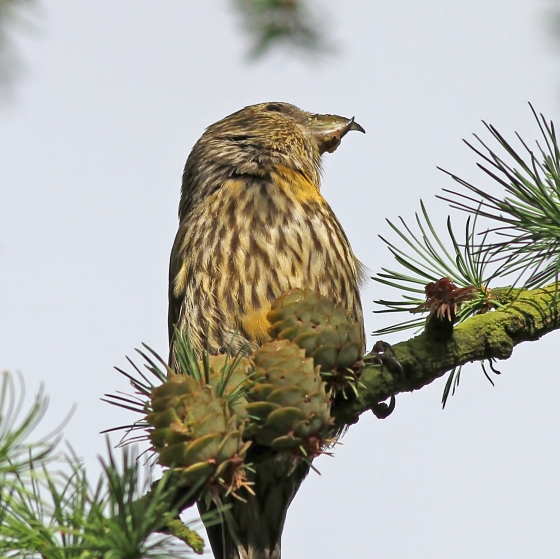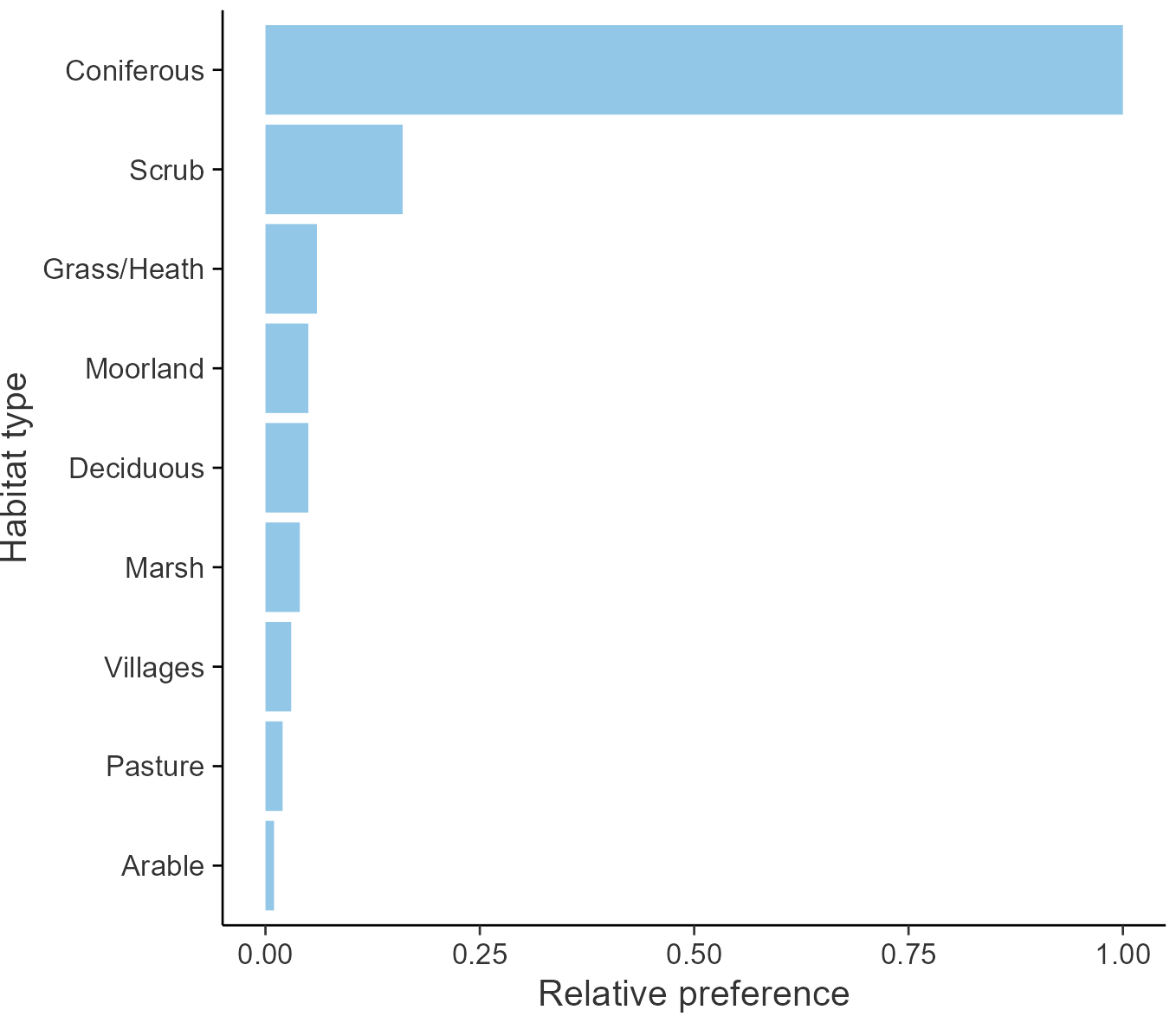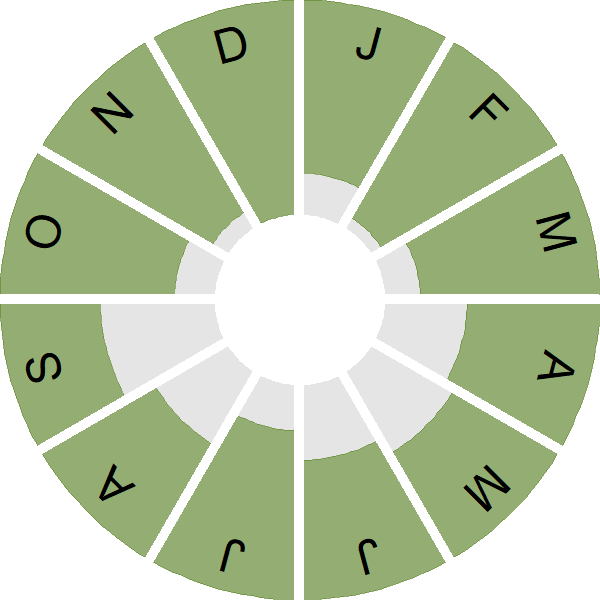Common Crossbill

Introduction
These sturdy finches are found in coniferous habitats throughout Britain & Ireland.
The Common Crossbill is both a resident species and a partial migrant to Britain & Ireland. This makes their breeding population size and trends difficult to assess. In some winters, there are large irruptions of Common Crossbills from their core range in the taiga forests of Eurasia, as birds move south and west in search of better feeding conditions. Some of these birds may stay in Britain & Ireland to breed, perhaps for a few years, before survivors and their offspring return to the Continent.
Common Crossbills are among the earliest birds to start breeding in Britain & Ireland, and indeed can breed at any time during the winter months. Males are more brightly coloured than females, with orange-red plumage to the females' grey-green. Both sexes use their distinctive bills to prise open pine cones and extract the seeds.
- Our Trends Explorer gives you the latest insight into how this species' population is changing.

Key Stats
Identification
Songs and Calls
Song:
Alarm call:
Flight call:
Status and Trends
Conservation Status
Population Change
Trends could not be produced for this species prior to the start of BBS. Atlas data for 2008-11 confirm that Crossbills were at a high level of abundance (Balmer et al. 2013) although the long-term trend is unclear and following a recent decrease numbers recorded by BBS are now similar to the late 1990s and early 2000s.
Distribution
Crossbills are highly mobile, moving in response to conifer seed production. During the winters covered by Bird Atlas 2007–11
or view it on Bird Atlas Mapstore.
or view it on Bird Atlas Mapstore.
European Distribution Map
Distribution Change
There have been significant gains in the numbers of occupied 10-km squares throughout much of Britain & Ireland since the 1981–84 Winter Atlas and the 1968–72 Breeding Atlas, associated with the maturing of forestry planted after 1945.
from
or view it on Bird Atlas Mapstore.
from
or view it on Bird Atlas Mapstore.
Seasonality
Common Crossbill is a localised resident and passage migrant and can be encountered throughout the year.
Weekly pattern of occurrence
The graph shows when the species is present in the UK, with taller bars indicating a higher likelihood of encountering the species in appropriate regions and habitats.

Habitats
Breeding season habitats
Relative frequency by habitat
The graph shows the habitats occupied in the breeding season, with the most utilised habitats shown at the top. Bars of similar size indicate the species is equally likely to be recorded in those habitats.

Movement
Britain & Ireland movement
Foreign locations of birds ringed or recovered in Britain & Ireland
Dots show the foreign destinations of birds ringed in Britain & Ireland, and the origins of birds ringed overseas that were subsequently recaptured, resighted or found dead in Britain & Ireland. Dot colours indicate the time of year that the species was present at the location.
- Winter (Nov-Feb)
- Spring (Mar-Apr)
- Summer (May-Jul)
- Autumn (Aug-Oct)

European movements
EuroBirdPortal uses birdwatcher's records, such as those logged in BirdTrack to map the flows of birds as they arrive and depart Europe. See maps for this species here.
The Eurasian-African Migration Atlas shows movements of individual birds ringed or recovered in Europe. See maps for this species here.
Biology
Productivity and Nesting
Nesting timing
Egg measurements
Clutch Size
Survival and Longevity
Survival is shown as the proportion of birds surviving from one year to the next and is derived from bird ringing data. It can also be used to estimate how long birds typically live.
View number ringed each year in the Online Ringing Report.
Lifespan
Survival of adults
Biometrics
Wing length and body weights are from live birds (source).
Wing length
Body weight
Ring Size
Classification, names and codes
Classification and Codes
- Order: Passeriformes
- Family: Fringillidae
- Scientific name: Loxia curvirostra
- Authority: Linnaeus, 1758
- BTO 2-letter code: CR
- BTO 5-letter code: CROSS
- Euring code number: 16660
Alternate species names
- Catalan: trencapinyes comú
- Czech: krivka obecná
- Danish: Lille Korsnæb
- Dutch: Kruisbek
- Estonian: kuuse-käbilind
- Finnish: pikkukäpylintu
- French: Bec-croisé des sapins
- Gaelic: Cam-ghob
- German: Fichtenkreuzschnabel
- Hungarian: keresztcsoru
- Icelandic: Krossnefur
- Irish: Crosghob
- Italian: Crociere
- Latvian: eglu krustknabis
- Lithuanian: eglinis kryžiasnapis
- Norwegian: Grankorsnebb
- Polish: krzyzodziób swierkowy
- Portuguese: cruza-bico
- Slovak: krivonos smrekový
- Slovenian: krivokljun
- Spanish: Piquituerto común
- Swedish: mindre korsnäbb
- Welsh: Gylfingroes
- English folkname(s): Shel-apple
Research
Causes of Change and Solutions
Causes of change
The UK breeding population of Crossbills is difficult to assess and is exceptionally variable between years, and the UK BBS trend presented here reflects post-breeding numbers on a wider geographical scale than just the UK. The UK trends are hence likely to reflect irruptive movements from (and to) the continent caused by changes to the cone crop.
Further information on causes of change
The UK breeding population of Crossbills is difficult to assess in any one season, even by special survey, and is exceptionally variable between years. The core of the population lies in the taiga forests across Eurasia, from where birds periodically irrupt westwards and southwards in search of better feeding conditions. After the irregular arrivals into Britain, many thousands of birds may stay to breed, perhaps for a few years, before survivors and their offspring return to the Continent (Newton 2006). The spur to irruptive movements is a failure of the cone crop, especially of Norway spruce Picea abies, which is this species' main food (Summers 1999). Crossbills begin breeding in January, sometimes even earlier, and by the start of the BBS period in April most sightings are of highly mobile family parties. In irruption years, BBS sightings may include many birds from the Continent, which often begin to arrive in late May or during June. The BBS trend therefore reflects post-breeding rather than breeding numbers, and on a wider geographical scale than just the UK. Climate modelling suggests that future range reductions could occur across Europe due to changes in patterns of seed availability (Mezquida et al. 2018).
Information about conservation actions
As the UK population of Crossbills is likely to be driven partly or largely by immigration and emigration, and it is difficult to identify conservation actions targeted specifically at increasing the UK population. Irruptive movements are prompted by shortages of food, in particular Norway spruce cones (Summers 1999), and hence managing the availability of suitable woodlands across the UK is likely to help support the European population of this species, by ensuring that potential sources of food are available in the UK when cone crops fail on continental Europe. Although they are able to feed on Scots Pine Pinus sylvestris when cones are open they cannot access seeds in closed Scots Pine cones, and non-native conifers may be an important food source for Common Crossbills in Britain (for example, Sitka Spruce Picea sitchensis, McNab et al. (2019)).
More Evidence
More evidence from Conservation Evidence.com
Partners
Citing BirdFacts
If you wish to cite particular content in this page (e.g. a specific value) it is best to use the original sources as linked in the page. For a more general citation of the whole page please use: BTO (20XX) BirdFacts Species: profiles of birds occurring in the United Kingdom. BTO, Thetford (www.bto.org/birdfacts, accessed on xx/xx/xxxx).

